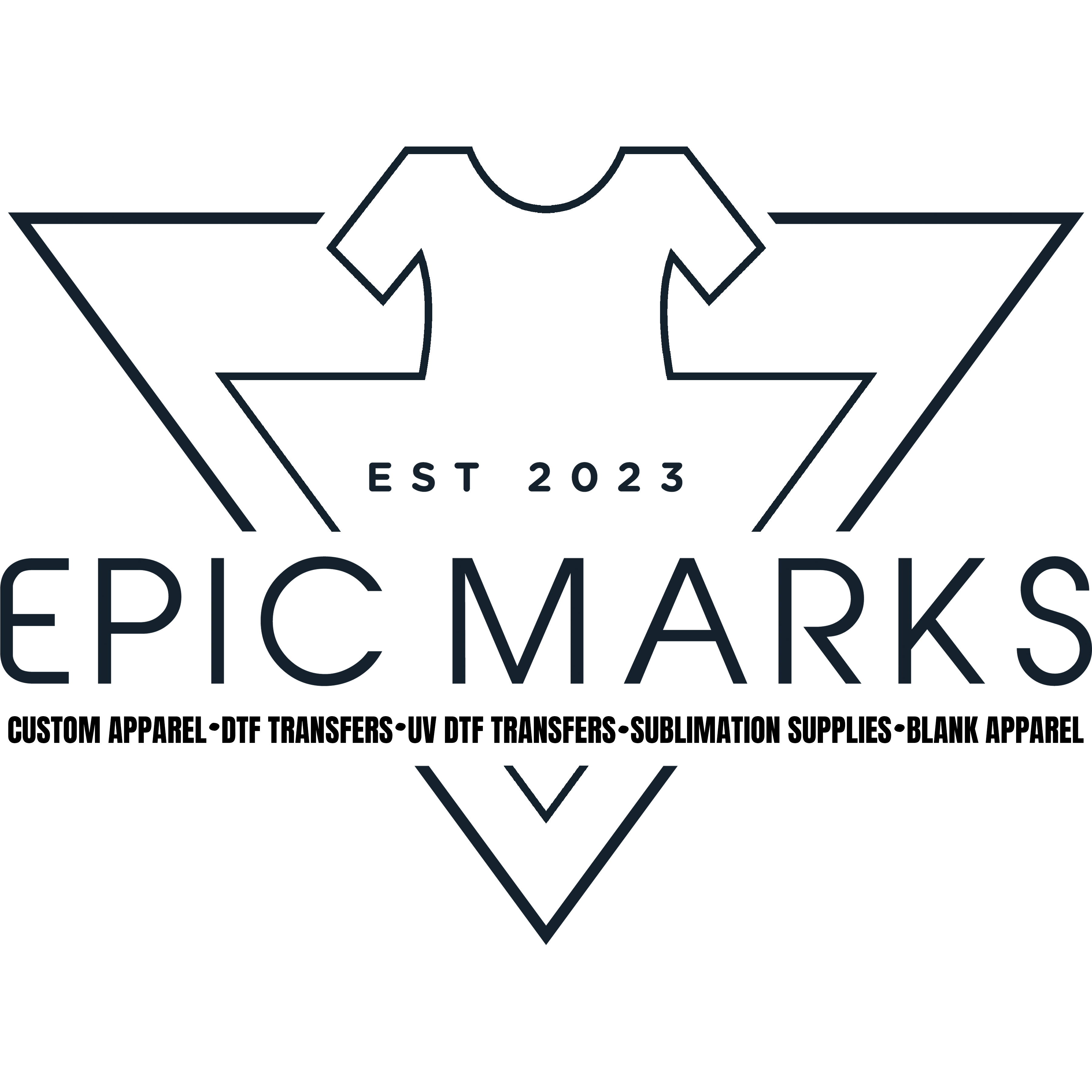Introduction to DTF Printing
Direct-to-Film (DTF) printing is transforming the way we create customized garments with vibrant, durable designs. This innovative printing method allows for flexibility across various fabrics and apparel, offering sharp, colorful results on everything from cotton to polyester.

Design and Image Preparation for DTF
Creating a striking DTF print begins with the design. Choose high-resolution images (ideally 300 DPI) for clear, detailed results. Ensure the color mode is set to CMYK to match the DTF ink profile, which enhances the final print quality and color vibrancy. Editing software like Adobe Photoshop or Illustrator provides tools to refine design edges and layers, ensuring clarity in the transfer process. Note that Canva can have issues saving images for DTF printing; we encourage the use of Photoshop or Illustrator for best results.
- Contrast and Saturation: Boosting contrast and saturation levels often improves final output, as DTF inks tend to print slightly softer than on-screen colors.
- Background and Transparency: Ensure a transparent background for designs intended for heat transfer; this reduces excess film visibility around the design.

Choosing Fabrics and Apparel
DTF is incredibly versatile and works well on various fabric types, making it a popular choice for mixed materials. The most common fabrics include:
- Cotton: Known for comfort and breathability, cotton takes well to DTF prints, making it ideal for T-shirts, sweatshirts, and tote bags.
- Polyester and Blends: Polyester allows for smooth, long-lasting color adherence, perfect for sportswear, activewear, and uniforms.
- Non-Woven Fabrics: DTF works on non-woven fabrics, which are commonly used in accessories like tote bags and hats, allowing for detailed prints on a variety of products.

Heat Pressing Tips for Flawless Transfers
Correct heat press technique is essential for optimal DTF prints. When pressing, consider these tips:
- Temperature and Time: Set the press to 300-320°F and press for 10-15 seconds. Adjust time slightly depending on the fabric’s thickness and sensitivity.
- Pressure: Use high pressure for even adhesion. The high-pressure setting ensures that your design transfers smoothly and remains durable, especially on thicker fabrics. For orders from us, customers receive a special hot-peel film, allowing an instant peel right after pressing, streamlining production without the need to wait for cooling.
Care Instructions for DTF Printed Garments
Following proper care instructions can significantly extend the life of your DTF-printed apparel. Here’s how to maintain print quality:
- Washing: Wash the garment inside-out in cold water on a gentle cycle to avoid disturbing the print.
- Drying: Air drying is preferred. If using a dryer, choose a low-heat setting to prevent color fading and print peeling.
- Avoid Bleach and Fabric Softeners: Both can degrade the print and the fabric over time.
- Ironing: Never iron directly on the print. If needed, place a cloth over the design or iron inside-out.
Conclusion
DTF printing opens up a world of possibilities for creating long-lasting, colorful designs on a range of fabric types. With the right design preparation, pressing techniques, and garment care, you’ll be able to produce beautiful, resilient prints that stand out. Whether for personal projects or professional printing, DTF offers unmatched versatility and quality.






